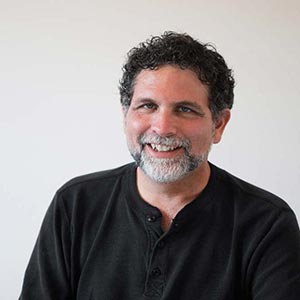The American Pragmatists outlined in the late nineteenth and early twentieth centuries a profound evolutionary process philosophy. The view of reality they explored was one in which all of reality was seen as an unending flow of energy. Human life was part of that flow, even the physical forms of material objects were part of that flow.
In any process philosophy reality is like a flowing river and all the things and people in the river are like ripples or eddies that appear for a time and then disappear. The Pragmatist John Dewey commented on how we mistakenly think that material objects are permanent, but that mistake comes from the fact that the rate of change for these objects is too slow for us to observe. Even a mountain has a life cycle and throughout that cycle it is born, grows, declines and eventually disappears. Everything is part of an unending flow. Charles Sanders Peirce promoted an idealist view that saw all mater as ultimately created from habits of mind. This probably puts him closest to Emerson in some regards. William James postulated that reality was made up of pure experience and that both that which we call mind and that which we call matter are made up of the stuff of experience.
Emerson, decades before any of these thinkers came of age, had already outlined a process philosophy that would take root in the American mind and become central to much of American philosophy right up to the present day. Emerson saw the universe as a self-regulating organic process of growth. Everything for Emerson is in flux and human beings are also a process. Or as he put it, “A man is a method, a progressive arrangement; a selecting principle, gathering his like to him, wherever he goes. He takes only his own out of the multiplicity that sweeps and circles round him.”
As human beings we are a gathering node in the flow of life. We have core tendencies and dispositions and because of those we attract certain things to us while rejecting others. We are not static objects that exist in a growing universe we are part of that growth. As his thought matures Emerson details the role that human beings can play in guiding the growth of the universe. This deep understanding of the reality of how things actually work Emerson dubs, “the science of the real.”
In his essay called The Poet Emerson expands upon some of the thoughts he had written about language in his original book called Nature. Everything to Emerson is a symbol. All things represent other things in an endlessly complex matrix of interlocking meaning. In the next generation Charles Sanders Peirce would complete ground-breaking work in semiotics and make the insight about symbols and representation the basis for a profound evolutionary philosophy. I believe the seeds of Peirce’s semiotics, or at least the anticipation of it, can be seen in Emerson when he says:
“We are symbols, and inhabit symbols; workmen, work, and tools, words and things, birth and death, all are emblems, but we sympathize with the symbols, and, being infatuated with the economical uses of things, we do not know that they are thoughts.”
Emerson’s thinking around the relationship of language to nature is daring and original and again anticipates some of the fundamental notions that will become the basis of Peirce’s philosophy and also the later Integral philosophy of Ken Wilber. Emerson had already written in Nature that he believed that language grew out of nature. Emerson did not see language as something separate from nature. The Symbols of language were not like sigh posts that pointed to the real things in nature. Language as it developed was itself part of nature. Language grows through the creation of expressions of names for things and again in his essay The Poet Emerson writes:
“This expression, or naming, is not art, but a second nature, grown out of the first, as a leaf out of a tree. What we call nature, is a certain self-regulated motion, or change; and nature does all things by her own hands, and does not leave another to baptize her, but baptizes herself; and this through the metamorphosis again.”
Language is like the leaf of a tree. A leaf is part of the tree, it is an extension of the tree. Language is an extension of nature, it is a second nature. As Emerson writes you can see that language is not a possession of human beings, if anything it is a possession of nature itself and it just happened to grow through human beings. The apple belongs to the tree, not to the branch that supports it. Language belongs to the universe, not to the species that speaks it.
I have been amazed to find the degree to which Emerson anticipates the evolutionary philosophy that would become an international sensation in the following century. His thinking is less scientific and often less rigorous than that of the next generation of American philosophers would be, but his imaginative and creative powers were magnificent.
